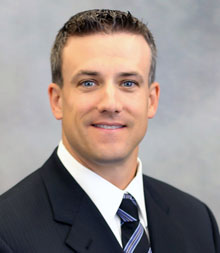
Message from your doctor…
Whether you or one of your family members or friends is considering labral repair / CAM takedown, or are scheduled for surgery, I understand this can be a stressful time. You may have forgotten some of the information we discussed during our last visit, or forgot to ask me a specific question about what to expect. This site is designed to help us stay connected, and to answer some of the most common questions patients ask me about hip arthroscopy.
I want to make sure that both you and your family members have timely information at your fingertips during the days, weeks, and months following your surgery…so you can get back to enjoying the activities you love.
MOST COMMON QUESTIONS
When can I put full weight on my leg?
You will be given crutches. You should not put full weight on the operative leg for about 4 weeks. You may do partial weight bearing after surgery, which means putting your foot down for balance with up to 50% of your weight. Typically after 1 month, you will be progressed to full weight bearing with the help of your physical therapist.
When can I go back to work?
This depends on the nature of your job. If you have a desk job or can work from home, you may be able to do computer/phone work within 1 week of surgery. However, you may not drive yourself to work for 3-4 weeks.
If you have a labor-intense job, or job that requires heavy lifting/repetitive bending, you may need to be off work for months. You will have restrictions for up to 6 months after a labral repair. Some employers allow light-duty, and we can give you work restriction notes at each post operative visit if necessary.
What restrictions do I have after my hip labral repair?
Since you had a hip labral repair, you should avoid flexing your hip further than 90 degrees after surgery. You should also avoid any pivoting/twisting motion of the hip. It is important to protect the labral repair immediately after surgery. Motion will be progressed in physical therapy based on your surgeon’s protocol.
SPORTS SPECIFICS
We know you are eager to return to your sports and hobbies. We want to guide you safely through that process. Please use the following as a guide.
DANCE
2-3 months post op: light dancing, no pivoting at hip
6 months post op: no restrictions
BASKETBALL
3 months post-op: Jogging and light dribbling/passing
4-5 months post-op: “Shooting around” but no contact, agility/plyometric training with the guidance of a professional
6 months post-op: No restrictions
FOOTBALL
3 months post-op: Jogging and throwing drills
4-5 months post-op: Agility/plyometric training with the guidance of professional
6 months post-op: No restrictions
SOCCER
3 months post-op: Jogging
4-5 months post-op: Agility/plyometric training with guidance of professional
6 months post-op: No restrictions
WRESTLING
3 months post-op: Jogging
4-5 months post-op: Agility/plyometric training with the guidance of a professional
6 months post-op: No restrictions
HOCKEY
3 months post op: may skate on ice but no pivoting or rapid movements
6 months: no restrictions
BASEBALL/SOFTBALL
3 months post-op: Jogging and throwing drills
4-5 months post-op: Throwing and batting drills
6 months post-op: No restrictions



